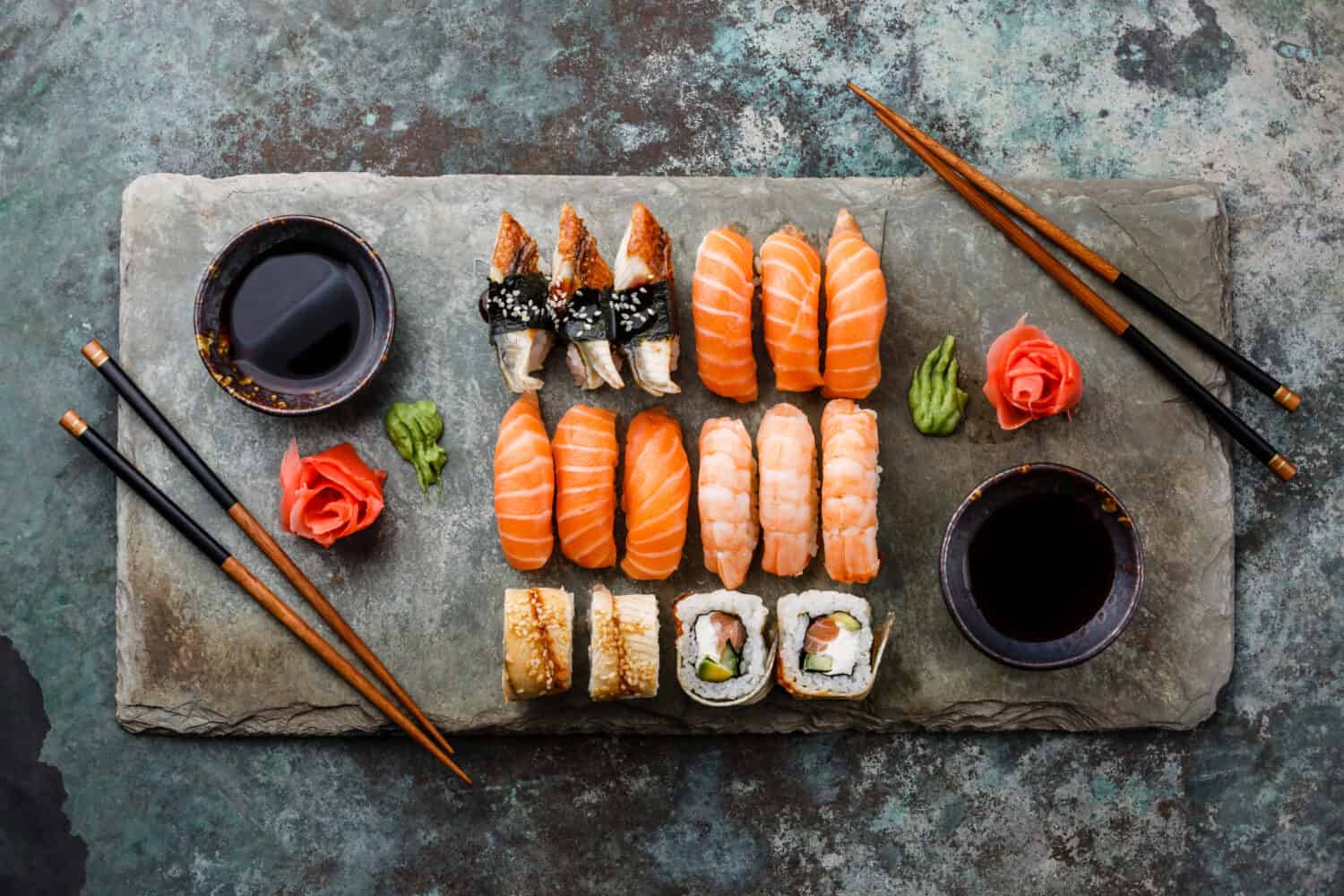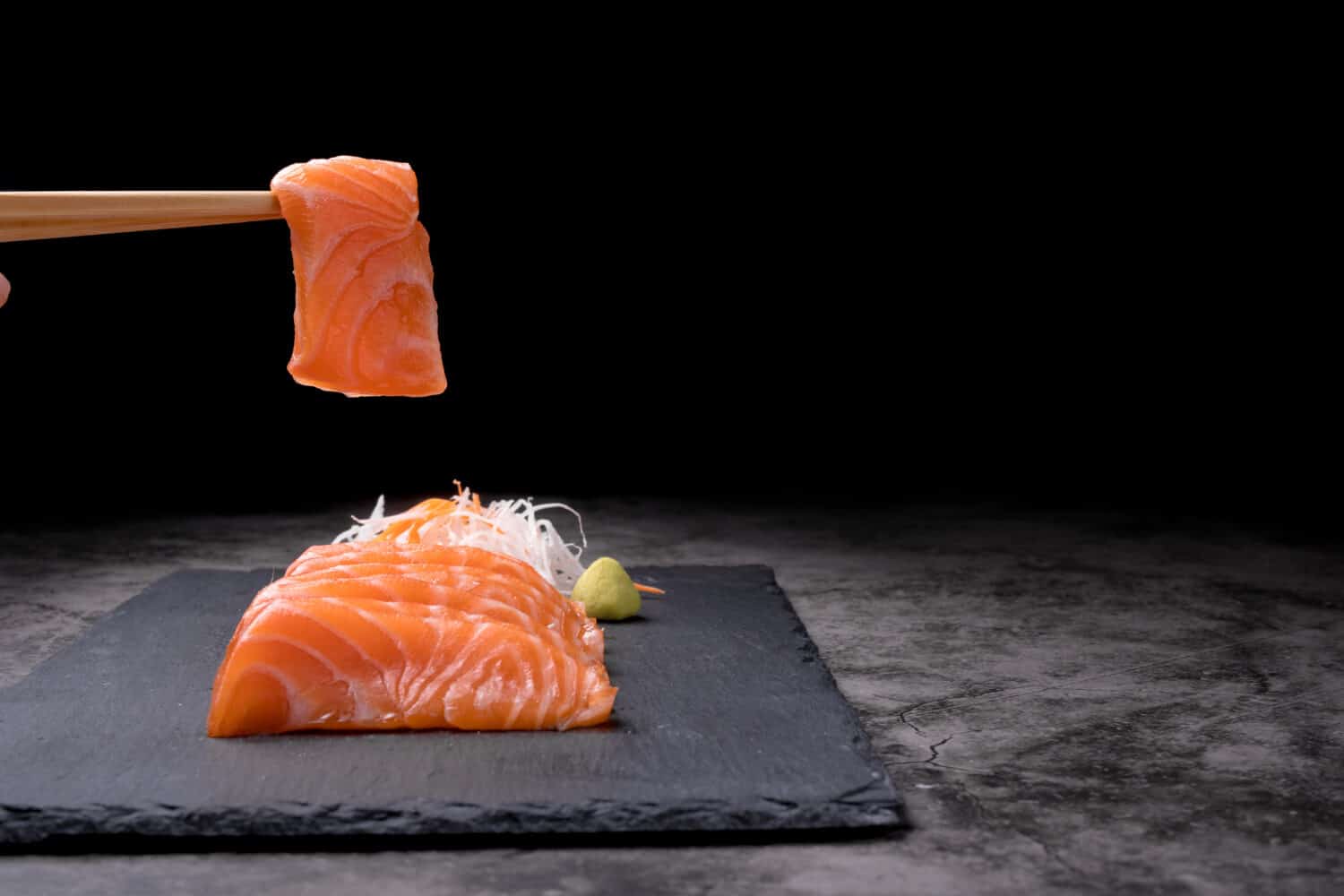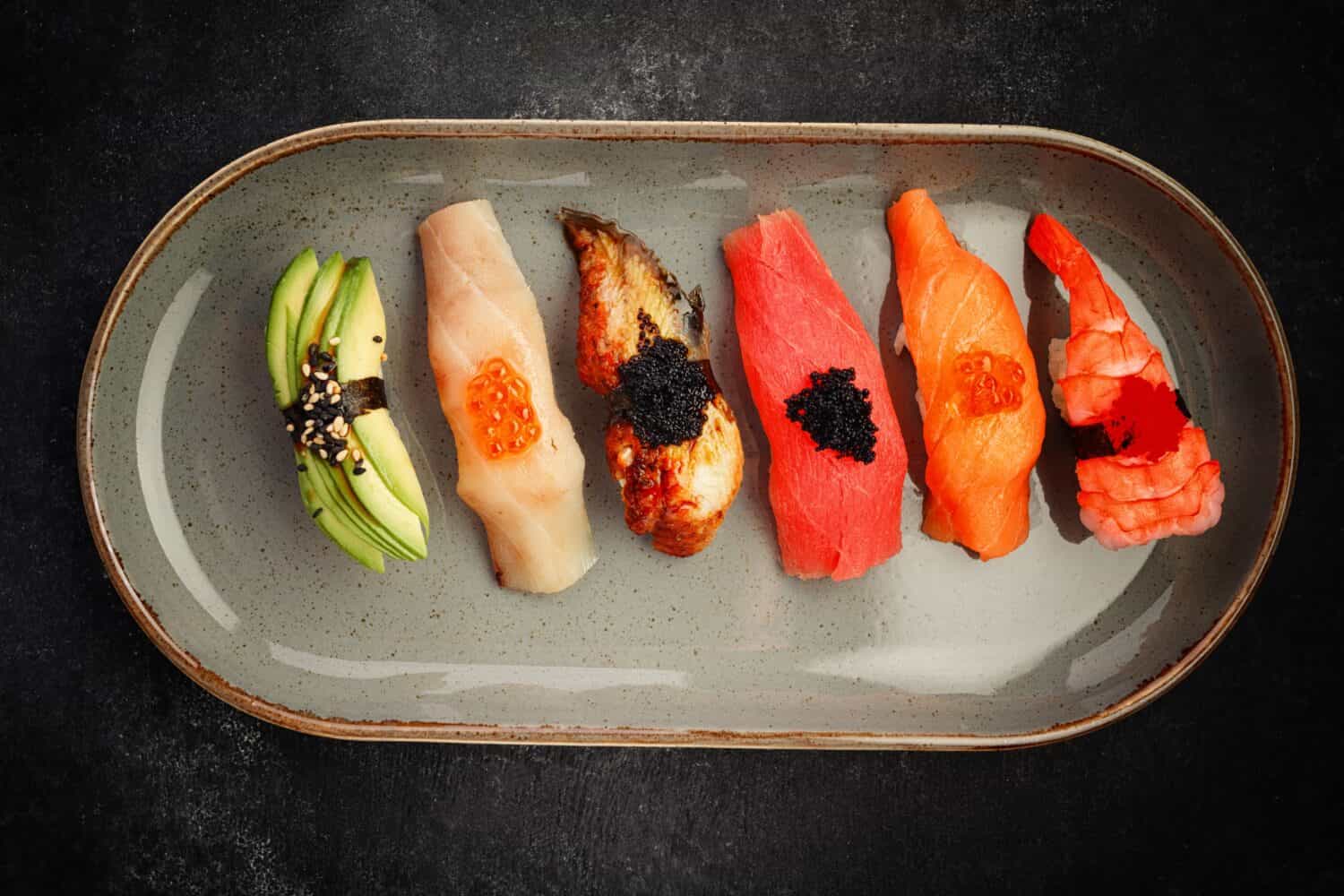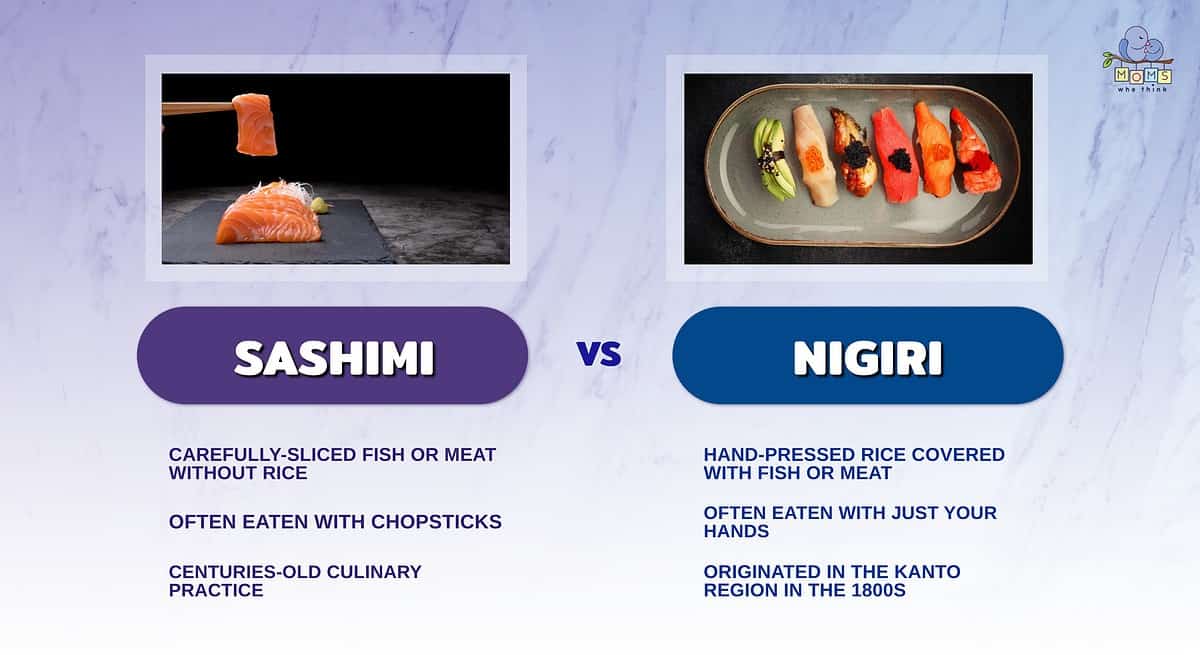

Nigiri vs. Sashimi: 4 Key Differences
Are you ready to go on an enticing tour through Japan's gastronomic delights? Join us as we explore the wonderful world of sushi, focusing on the four key differences between two popular dishes: Nigiri vs. Sashimi.
The foundations of traditional Japanese cuisine are Nigiri and Sashimi. Both dishes have countless taste combinations to experiment with since they're both versatile and nutritious. In addition to being delicious, they are also appealing to look at. But it's crucial to recognize the differences between the two. Fresh raw fish slices are known as Sashimi, while fresh raw fish slices on top of a ball of sushi rice are known as Nigiri. Nigiri doesn't have rice and may contain fish or another type of meat when served.
Prepare your mind and taste buds as we unveil the enigmas of Nigiri and Sashimi, unraveling the exquisite battle between rice and raw fish and the essence of Japanese culinary skill.
4 Key Differences between Nigiri and Sashimi
Both Nigiri and Sashimi are popular dishes in Japanese cuisine, although they differ in ingredients, presentation, preparation, and manner of consumption. Below are four key differences between Nigiri and Sashimi:
1. Ingredients
While Sashimi only uses meat or seafood, Nigiri contains both rice and fish/meat as its main ingredients. Nigiri, also known as sushi rice or sticky rice, is a tiny rice ball with a piece of raw fish on top. Sashimi, on the other hand, comes from entirely uncooked fish or seafood and doesn't have either rice or vinegar. Fresh fish usually comes raw or uncooked and finely cut as Sashimi. People frequently use salmon, tuna, halibut, and squid among the various kinds of seafood.
2. Presentation
Nigiri consists of a small oblong-shaped pile of flavored sushi rice topped with fish, seafood, or other toppings. Sashimi, a dish of thinly sliced raw meat, mainly from fish like salmon or tuna, is eaten by people without rice.
3. Preparation
Nigirizushi, which translates to "hand-pressed sushi" from the Japanese, is created by shaping flavored rice into a tiny oval form and covering it with raw fish or meat. On the other hand, chefs exquisitely execute everything in the way Sashimi is made, from the exceptional slicing to the careful picking of fish. Sashimi is an integral part of the gastronomic history of Japan and encompasses both the slicing and the visual preparation of the fish. It primarily consists of expertly cut, raw, fresh fish or seafood pieces, creatively sliced into multiple sizes and shapes according to the structure of the food item being displayed. Hira-zukuri, which translates to "rectangular slice," is the most basic and conventional manner of cutting fish for Sashimi, known for its simplicity.
4. Eating Technique
You can eat Sashimi, Nigiri sushi, and maki rolls all in just one mouthful. Some people often consume Nigiri or any kind of sushi using their hands. Particularly when eating Nigiri sushi, which consists of a single piece of rice-topped fish or meat sushi. In contrast, people often eat Sashimi using chopsticks. However, you can alternatively consume it by using your hands.
What is Nigiri?

©Plateresca/Shutterstock.com
Nigirizushi, which translates to "hand-pressed sushi" from the Japanese, consists of an oval-shaped pile of sushi rice, which is the sour, vinegared sticky rice that gives this sushi its notoriety, with a slice of (often) raw fish on top. Nigiri sushi appears simple to eat, but it is not that simple to prepare. It takes a lot of practice and devotion to properly slice the fish and shape the rice in the right manner. Depending on the type of fish, people prepare Nigiri sushi with raw or partially cooked fish, and then they top it with sauces such as salt, soy sauce, ponzu, wasabi paste, or other ingredients like shiso leaves.
Origin of Nigiri
The invention of Nigiri sushi first occurred in the Kanto area of Japan in the early 1800s. It earned its first name, "Edomae sushi," from the term "Edomae," which translates to "in front of Edo" and pertains to the abundance of fish available in Edo Bay at the time. PBS claims that Hanaya Yohei has been linked with the development of Nigiri. Yohei created the first sushi business in the district of Edo, named Ryogoku, in 1824. Yobei's stand became very successful, and in an attempt to serve a large number of buyers rapidly, he created Nigiri sushi, which allows for considerably faster production.
Edomae sushi uses a different preparation technique compared to oshizushi's process, which requires compressing into a container for fermentation. People use raw seafood or fish that has already been pressed and seasoned, and then they combine it with vinegar rice by hand. There was no need for fermentation because of its freshness, which makes the whole process a lot faster, satisfying the demands of many consumers.
Types of Nigiri
- Hotate Nigiri: This is a hand-pressed sushi rice topped with pieces of scallops. They are frequently presented with a sprinkle of sauce or lemon and cut across the middle in order to create a butterfly-like shape.
- Sake Nigiri: Salmon Nigiri consists of a fresh salmon slice placed over pressed vinegar rice. Sake, or salmon in Japanese, is a deliciously sweet and mouthwatering fish high in omega-3 fatty acids and protein.
- Ebi Nigiri: This dish has butterflied shrimp on top of hand-pressed sushi rice. Typically, ebi is butterflied, skewered, and cooked before being turned into sushi or Sashimi. However, some people usually consume shrimp that are freshly caught and treated carefully.
- Tamago Nigiri: This consists of hand-pressed sushi rice with an omelet slice on top. Tamago Sushi is a favorite among children and is a great alternative for people who don't eat raw fish or meat.
- Unagi Nigiri: This consists of hand-pressed sushi rice with eel slices on top. The unagi eel is thoroughly cooked, typically smoked or grilled, then coated with a rich, sweet soy sauce.
What is Sashimi?

©Kingmaya Studio/Shutterstock.com
Sashimi is a type of fresh, raw fish that includes fish such as tuna mackerel, mackerel, salmon, hamachi yellow tail, and even shrimp. The classic Japanese dish often complements pickled radish, pickled ginger, wasabi, or soy sauce. Typically, a traditional Japanese meal serves Sashimi as the first course, but it can also be presented as an entrée alongside rice and miso soup.
People most commonly eat seafood as Sashimi, but they can also serve other meats (such as beef, horse, and deer) and foods (such as yuba tofu skin and konnyaku) as Sashimi. How fresh the fish is and how it is cut, laid out, and decorated determine the quality of Sashimi. The fact that no two pieces of fish have the same flavor and that even the same type of fish can have wildly different flavors and textures makes Sashimi a wonderful dish.
Origin of Sashimi
Sashimi, which translates to "pierced body" in Japanese, is a culinary practice of consuming raw fish and pork. Sashimi is a centuries-old classic Japanese cuisine. People initially preserved fish by making it into Sashimi. When sushi originally arrived in Japan during the Edo era (1603–1868), people began consuming raw fish.
Eating fresh, raw fish was a custom prior to the invention of both Sashimi and sushi since the principle of Japanese cuisine aims to honor the natural taste of foods. As a result, consuming sushi and Sashimi has become a staple of Japanese cuisine. Namasu was a popular staple in Japan throughout the Heian era and is the possible origin of Sashimi.
Popular types of Sashimi
- Maguro (tuna): Tuna, or maguro, is a soft yet fatty fish. There are several various slices of maguro available, but Otoro has fatty meat that melts in your mouth. People can consume it on its own, but they more often pair it with dipping sauces made of ingredients like soy, ginger, and wasabi.
- Tai (sea bream): People regard this as one of the best white-bodied fish in Japanese cuisine because of its gentle, delicate flavor. If you're preparing fillets, they make an excellent choice since they have an appealing meaty texture, a fresh taste, and a subtle taste.
- Kanpachi (greater yellowtail/amberjack): Amberjack happens to be one of the most famous dishes on the menu at Japanese restaurants. It is healthy and makes an excellent main dish, particularly if served alongside fresh root vegetables.
- Buri/hamachi (yellowtail or amberjack): Any fish larger than 80 cm is considered Buri, whereas hamachi is the term given to smaller, domesticated Buri in the western part of Japan.
- Shime Saba (cured mackerel): Shime saba is a cured mackerel fillet that works well as a Sashimi and sushi garnish. The rich, meaty taste that comes from the oily flesh pairs beautifully with freshly grated ginger or chopped green onion.
Calories in Nigiri vs. Sashimi: Which is healthier?
Both Nigiri and Sashimi offer beneficial health advantages due to their use of fresh, raw fish as their primary ingredient. These dishes promote weight loss as they are high in nutrients and omega-3 fatty acids.
Despite having higher levels of protein and lacking preservatives or chemicals, people have deemed Sashimi healthier. Nigiri is frequently higher in carbs and fiber than Sashimi, given that it contains rice and other spices, although the nutritional content varies depending on the ingredients used. Sashimi offers a more extensive source of protein and healthy fats since it consists entirely of fresh meat or fish.
The typical calorie count for a single piece of Nigiri sushi ranges from 40 to 65. A single bite of nigiri sushi has 40 calories, 50 calories, or 65 calories. It all depends on what type of nigiri sushi you choose. On the other hand, a typical slice of Sashimi has 30 to 40 calories. Sashimi is a fantastic option if you're trying to cut back on calories.
Which is more expensive?

©Kirienko Oleg/Shutterstock.com
Both Nigiri and Sashimi are fairly affordable foods. However, Nigiri sushi often costs less than Sashimi. Since Nigiri doesn't contain rice and contains more fish than Sashimi, Sashimi is frequently more costly. Nigiri includes rice, making the customer feel satiated more quickly.
Conclusion

- It's important to remember that Sashimi never contains rice.
- Sashimi can be eaten with just your hands, but it's more common to use chopsticks. Nigiri, on the other hand, is usually eaten with just your hands.
- Sashimi has been around for centuries, while Nigiri has been a part of Japanese cuisine since the 19th century.
Nigiri and Sashimi are both delectable meals that highlight the fundamental qualities of raw fish in Japanese cuisine. Based on the food preparation, experiencing the flavors together might be quite distinct. Given that Sashimi doesn't count as a kind of sushi, it varies greatly from Nigiri. While Sashimi highlights the simplicity and natural flavors of the fish, Nigiri delicately blends the fish with seasoned rice to provide a more diversified variety of flavorful sensations.
Sashimi could be a preferable choice if you want to consume fewer calories, while Nigiri could be a better option if you're searching for a more filling supper, nevertheless.
The next time you're eating these delicious treats, keep in mind that Nigiri and Sashimi are more than simply foods. They are cultural symbols of appreciation for ingredients, professional workmanship, and the never-ending pursuit of culinary excellence.